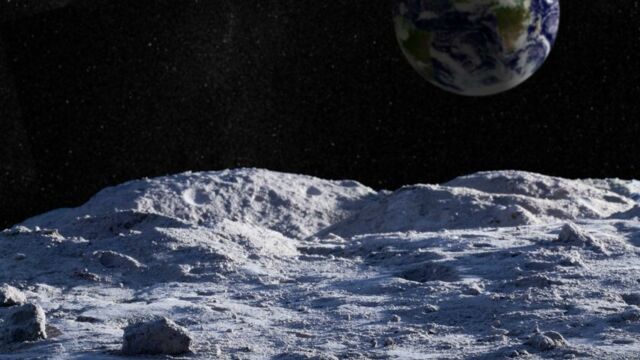Jekan Thanga, professor of aerospace and mechanical engineering at the University of Arizona was inspired by a biblical reference for the construction of a 'lunar Noah's ark,' which would shelter not only animals, this time, but samples of 6.7 million animal, plant and fungal species, in the form of seeds, pods or eggs. A 'modern global insurance policy,' in order to safeguard biodiversity in the event of a disaster on Earth.
Discover our latest podcast
A surprisingly practical proposal
This project was presented in early March during a conference of the Institute of electrical and electronics engineers. 'The Earth is a naturally volatile environment,' Jekan Thanga said in a statement.
As humans, we narrowly dodged a bullet about 75,000 years ago with the supervolcanic eruption of Toba, which caused a cooling period of 1,000 years and which some say is an assumed bottleneck in human genetic diversity. Human civilization having such a large footprint, if it were to collapse it could have a cascading negative effect on the rest of the planet.
It would therefore be a question of building an installation under the surface of the Moon, powered by solar energy, in order to send and store millions of cryogenised samples—kept at very low temperatures, between -80°C and -196°C. This 'Noah's ark of biodiversity' could be installed in underground galleries dug by lava flows several billion years ago and which are close to the lunar surface.
Discovered in 2013, these tunnels are said to be more than 100 meters in diameter and would have remained untouched for '3 to 4 billion years,' thus offering optimal protection against solar radiation, micrometeorites or even the extremes temperature swings on the surface of the Moon. According to the scientific team, it would take 250 rocket launches to transport about 50 samples of the 6.7 million species selected.
A reserve sheltered from climate change
These very low temperatures are not without consequences on the infrastructure, but the press release explains that it is possible to take advantage of the phenomenon called 'quantum levitation,' thanks to superconductivity. Very low temperatures change the magnetic and electrical properties of certain materials, which become superconductors and 'let current flow without any resistance' or loss of energy, explains the CNRS. 'In this process, a cryo-cooled superconducting material—or a material that transfers energy without losing heat, like a traditional cable does—floats above a powerful magnet. The two pieces are locked together at a fixed distance, so the superconductor follows the magnet wherever it goes, it's like they're held in place by strings, but invisible strings.' This phenomenon could be used to make shelves 'float above metal surfaces.'
A global reserve of plant seeds already exists, it is located in the Norwegian archipelago of Svalbard and contains more than a million types of seeds, stored to 'ensure the future food supply of the world,' as explained by Svalbard Global Seed Vault on their site. It is as much a matter of dealing with natural disasters, as with climate change, conflicts or even mismanagement of resources. The only downside of the Svalbard Facility: the facility itself has to deal with climate change, the melting permafrost in particular flooding the warehouse access tunnel in 2016.
'Relocating' a biodiversity reserve on the Moon could certainly make it possible to overcome climate change, but there is still a lot of research to be done before being able to possibly launch this project. It will be particularly necessary in order to study the consequences of the absence of gravity on the seeds or to establish communication procedures with the Earth.















